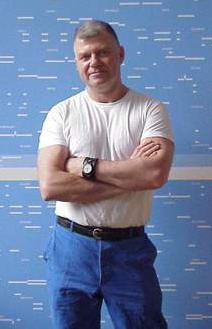
The Denver Art Museum (DAM) is an art museum located in the Civic Center of Denver, Colorado. With encyclopedic collections of more than 70,000 diverse works from across the centuries and world, the DAM is one of the largest art museums between the West Coast and Chicago. It is known for its collection of American Indian art, as well as The Petrie Institute of Western American Art, which oversees the museum's Western art collection. and its other collections of more than 70,000 diverse works from across the centuries and world. The museum's Martin Building was designed by famed Italian architect Gio Ponti in 1971.

Kirkland Museum of Fine & Decorative Art is an art museum in Denver, Colorado, United States. The museum houses three principal collections and includes the original studio and art school building of artist Vance Kirkland (1904–1981). On 10 March 2018, Kirkland Museum reopened after moving to a new building at 1201 Bannock Street in Denver's Golden Triangle Creative District.

The Art Gallery of South Australia (AGSA), established as the National Gallery of South Australia in 1881, is located in Adelaide. It is the most significant visual arts museum in the Australian state of South Australia. It has a collection of almost 45,000 works of art, making it the second largest state art collection in Australia. As part of North Terrace cultural precinct, the gallery is flanked by the South Australian Museum to the west and the University of Adelaide to the east.

Inka Essenhigh is an American painter based in New York City. Throughout her career, Essenhigh has had solo exhibitions at galleries such as Deitch Projects, Mary Boone Gallery, 303 Gallery, Stefan Stux Gallery, and Jacob Lewis Gallery in New York, Kotaro Nukaga, Tomio Koyama Gallery in Tokyo, and Il Capricorno in Venice.

Joan Mitchell was an American artist who worked primarily in painting and printmaking, and also used pastel and made other works on paper. She was an active participant in the New York School of artists in the 1950s. A native of Chicago, she is associated with the American abstract expressionist movement, even though she lived in France for much of her career.

Ronnie Landfield is an American abstract painter. During his early career from the mid-1960s through the 1970s his paintings were associated with Lyrical Abstraction, and he was represented by the David Whitney Gallery and the André Emmerich Gallery.
Sylvia Snowden is an African American abstract painter who works with acrylics, oil pastels, and mixed media to create textured works that convey the "feel of paint". Many museums have hosted her art in exhibits, while several have added her works to their permanent collections.
Jerry De La Cruz is an American fine artist born and raised in Denver, Colorado. He currently works out of his studio in the Santa Fe District in Denver, Colorado, and out of his studio in the Little River District in Miami, Florida.

Keith Milow is a British artist. He grew up in Baldock, Hertfordshire, and lived in New York City (1980–2002) and Amsterdam (2002–2014), now lives in London. He is an abstract sculptor, painter and printmaker. His work has been characterised as architectural, monumental, procedural, enigmatic and poetical.

Arnold Blanch, was born and raised in Mantorville, Minnesota. He was an American modernist painter, etcher, illustrator, lithographer, muralist, printmaker and art teacher.

Barbara Takenaga is an American artist known for swirling, abstract paintings that have been described as psychedelic and cosmic, as well as scientific, due to their highly detailed, obsessive patterning. She gained wide recognition in the 2000s, as critics such as David Cohen and Kenneth Baker placed her among a leading edge of artists renewing abstraction with paintings that emphasized visual beauty and excess, meticulous technique, and optical effects. Her work suggests possibilities that range from imagined landscapes and aerial maps to astronomical and meteorological phenomena to microscopic views of cells, aquatic creatures or mineral cross-sections. In a 2018 review, The New Yorker described Takenaga as "an abstractionist with a mystic’s interest in how the ecstatic can emerge from the laborious."
Roger Allen Kotoske (1933–2010) was an American sculptor, painter and educator.

Mel Tanner was an American light sculptor, painter, installation artist, and videographer. His wife, Dorothy Tanner, was an American light sculptor, installation artist, musician, videographer, and spoken word artist based in Denver, Colorado. The couple worked very closely for over 40 years. Their main project was the creation of Lumonics that consists of their light sculptures, live projection, video, electronics, and music as a total art installation. Author and art historian, Michael Betancourt, described this visual music performance work as a Gesamtkunstwerk in his book, The Lumonics Theater: The Art of Mel & Dorothy Tanner, published in 2004.
Mary Obering was an American painter focusing mainly on geometric abstraction.
Ana Teresa Fernández is a Mexican performance artist and painter. She was born in Tampico, Tamaulipas, and currently lives and works in San Francisco. Fernández attended the San Francisco Art Institute, where she earned bachelor's and master's of fine arts degrees. Fernández's pieces focus on "psychological, physical and sociopolitical" themes while analyzing "gender, race, and class" through her artwork.
Nan Bangs McKinnell (1913–2012) was an American ceramicist and educator. Nan was a founding member of the National Council on Education for the Ceramic Arts, a member of the American Craft Council College of Fellows, along with receiving several awards for her work. James "Jim" McKinnell (1919–2005), her spouse, was also a ceramicist and they made some collaborative work.

Alberto Rey is a Cuban-American painter, illustrator, filmmaker, educator and writer. His work has been featured in over 200 exhibitions and screenings and has been included in the permanent collections of twenty museums including Albright-Knox Art Gallery, the Bronx Museum of the Arts, the Brooklyn Museum, the Burchfield Penney Art Center, El Museo del Barrio, Extremaduran and Latin American Museum of Contemporary Art, Museum of Art Fort Lauderdale, Museum of Latin American Art, and the Peabody Essex Museum. Rey is currently a distinguished professor at the State University of New York at Fredonia and in 2012 was inducted into the Burchfield Penney Art Center's Living Legacy Project. He has written several books corresponding to series of his work: Candaway Creek - Western New York (2021), Lost Beauty: Icebergs (2021), Lost Beauty: Part II - The Art of Museum Stories (2021), Extinct Birds Project (2018), and Complexities of Water - Biological Regionalism: Bagmati River, Kathmandu Valley, Nepal (2016) about the holiest and most polluted river Bagmati River in Kathmandu, Nepal. He has also had many articles and illustrations published in several magazines including the Buffalo Spree, Gray’s Sporting Journal, Art of Angling Journal, Fish and Fly Magazine, American Angler, and Saltwater Fisherman. Art historians and curators have also written one book and several essays about his work. Rey was selected as an international finalist for the 2020 Orvis Freshwater Guide of the Year and the winner of the 2021 Orvis Fly Fishing Guide of the Year.

Vivian Springford (1913–2003) was an American painter and assemblage artist active in the second half of the 20th century. Springford's abstract paintings and collages are best known for their focus on using color to express captivating patterns and phenomena found in nature as well as from Chinese Calligraphy and Eastern forms of thought such as Taoism and Confucianism.

The Clyfford Still Museum is an art museum in Denver, Colorado. The museum's collection includes 3,125 works by abstract expressionist Clyfford Still (1904–1980), which represents 93 percent of the artist's lifetime output and complete archives.

Henrietta Bromwell (1859–1946) was an artist, author, and a socialite from Denver. She is known for her landscape paintings and literature. She was a co-founder of the Artists' Club of Denver, which led to the founding of the Denver Art Museum. She taught oil and watercolor painting in downtown Denver and was an organizer and jurist at local art exhibitions. Bromwell was a genealogist, with multiple volume publications, and a publisher of her and her father's works.















